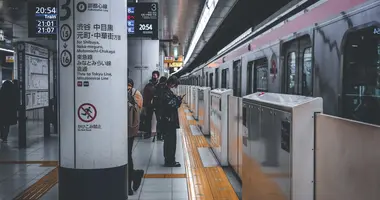Understanding Electricity and Voltage in Japan for Travelers
Traveling to Japan is an exciting adventure, but it requires some practical preparation to ensure a smooth trip. One important aspect to understand is the country's electrical system, including plugs, voltage, and frequency. Being aware of the differences compared to your home country will help you avoid issues with your electronic devices. This comprehensive guide covers all the key information you need to know about using electricity during your travels in Japan.
Japan's Standard Voltage and How It Compares to Other Countries
Japan's standard voltage is 100 volts, which is lower than what's used in most other developed countries. For comparison, the United States uses 110-120V, while many European countries operate on 220-240V. This means that some appliances designed for higher voltages, especially heating devices like hair dryers and irons, may not work optimally in Japan without a voltage converter. However, most modern electronics like laptops and phone chargers have dual voltage capability (100-240V) and can be used in Japan with just a plug adapter.
The Two Different Frequencies Used in Japan and How They Are Distributed Geographically
Japan is unique in that it uses two different power frequencies - 50 Hz in the east including Tokyo, and 60 Hz in the west including Osaka and Kyoto. This frequency split dates back to the late 1800s when generators were imported from the U.S. (60 Hz) and Germany (50 Hz) and the grids expanded from there. The dividing line runs along the Fujigawa River in Shizuoka and through Itoigawa City in Niigata. While this frequency difference doesn't affect most modern appliances, some devices like clocks may run slightly faster or slower.
Types of Electrical Plugs and Outlets Commonly Found in Japan
The plugs and outlets used in Japan are type A, which have two flat pins. This is the same type used in the U.S., Canada, Mexico and some other countries. However, most plugs in Japan are not polarized or grounded (no third pin). Many North American plugs will fit, but some may be too wide or have a third grounding pin that won't fit a Japanese outlet. Bringing a universal plug adapter is recommended. You may also encounter type B outlets that have an extra slot for the U.S. style grounded plug.
Considerations for Using Foreign Appliances in Japan, Especially for Heating Devices
Using appliances from overseas requires caution in Japan due to the different voltage. Items like laptops, phone chargers, and electric razors are usually dual voltage and can be used with just a plug adapter. However, appliances that generate heat or have motors, like hair dryers, flat irons, and fans, may not work properly or could get damaged without a voltage converter. Check your appliance's label - if it doesn't say "100-240V" you'll need a converter. Even then, a 100V curling iron from Japan used on 120V in the U.S. will get hotter than intended, so be careful.
Where to Find Voltage Converters and Adapters in Japan
If you need a voltage converter or plug adapter after arriving in Japan, you have several options. Major electronics stores like Yodobashi Camera and Bic Camera have a range of adapters, converters, and other travel accessories, with stores located in most cities. The staff may speak some English as well. You can also try 100 yen shops like Daiso for cheap plug adapters. If staying at a hotel, check with the front desk as they may have adapters to lend to guests.
Charging Options While Traveling, Such As on Trains and in Restaurants
Finding a place to charge your phone or other devices while out exploring Japan is getting easier. Newer shinkansen bullet trains have electrical outlets (usually type A) at window seats or sometimes under the seats or in between rows. You can request these seats when booking or purchasing tickets. Some restaurants and cafes also provide charging stations or outlets for customer use, especially in busy areas. When in doubt, major train stations and airports have paid charging lockers as well.
Tips for Buying Electronic Appliances in Japan for Use in Other Countries
If you're planning to buy Japanese electronics to bring back home, make sure to check the voltage and plug type in the country where it will be used. Many Japanese appliances are designed solely for 100V, so they may not work properly or safely with higher voltage outlets overseas unless a step-up transformer is used. However, some stores in major cities and airports cater to tourists and carry products designed for overseas use, which work with 100-240V. Look for phrases like "For Travel Overseas" on the packaging. Also consider if it has the right plug type or comes with adapters for your country.










